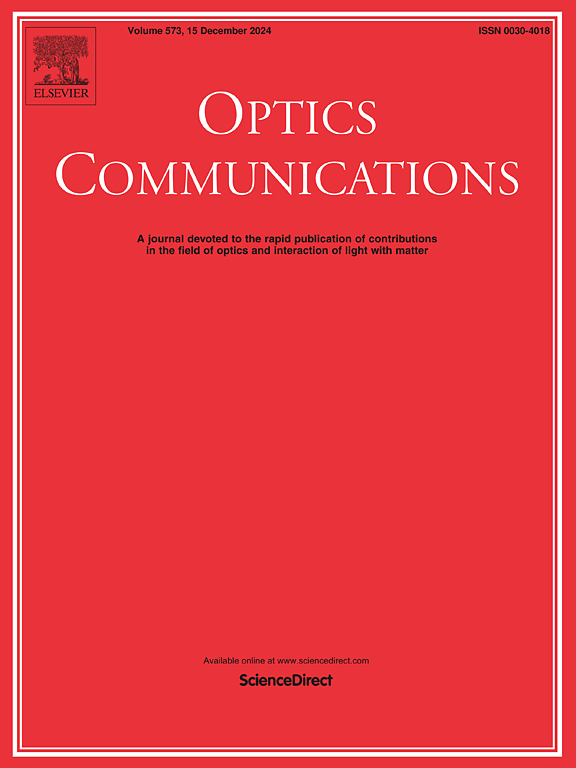Polarization self-modulation in a coaxially end-pumped orthogonally polarized laser
IF 2.5
3区 物理与天体物理
Q2 OPTICS
引用次数: 0
Abstract
A scheme of orthogonally polarized laser (OPL) with polarization self-modulation (PSM) in the coaxial end-pumping configuration is proposed in this work. The gain medium consisted of two Nd:YVO4 crystals with orthogonal optical axes, and a quarter-wave plate served as a polarization-switching device. By rotating the electric vector during each cavity round trip, frequency degeneration and correlated operation of two polarization components were achieved. The polarization eigenstates in two orthogonal directions were analyzed using the Jones matrix and eigenequation. The spectral distribution was also briefly discussed based on thermal effects. The results showed that two eigenmodes located at 45° and 135° to the crystal axis, respectively, with a frequency difference equaled to half the free spectral range of the resonator. In the experiments, it was found for the first time that the modulation of eigenstates can be realized by adjusting pump parameters (including pump power, beam size, focusing position, and pump wavelength) and cavity anisotropy, which enables the manipulation of degree of polarization (DOP) and monitoring the resonator properties. Overall, tuning the laser polarization eigenstate offers a flexible method to switch the operational states of the OPL, including the longitudinal mode frequency difference, DOP, polarization angle, etc. It is believed this scheme provides a valuable reference to realize compact, high-beam-quality, and robust OPLs for applications such as dual-frequency light source development, precision measurement and polarization control.
同轴端泵正交偏振激光器中的偏振自调制
本研究提出了一种在同轴端泵配置中具有偏振自调制(PSM)功能的正交偏振激光器(OPL)方案。增益介质由两个具有正交光轴的 Nd:YVO4 晶体组成,四分之一波板作为偏振切换装置。通过在每次腔体往返过程中旋转电矢量,实现了两个偏振分量的频率退化和相关操作。利用琼斯矩阵和特征方程分析了两个正交方向上的偏振特征状态。此外,还简要讨论了基于热效应的光谱分布。结果表明,两个特征模分别位于与晶体轴线成 45° 和 135° 的位置,其频率差相当于谐振器自由光谱范围的一半。实验首次发现,通过调整泵浦参数(包括泵浦功率、光束大小、聚焦位置和泵浦波长)和腔体各向异性,可以实现对特征状态的调制,从而操纵极化度(DOP)和监测谐振器特性。总之,调整激光偏振特征态提供了一种灵活的方法来切换 OPL 的工作状态,包括纵模频差、DOP、偏振角等。相信该方案为实现紧凑型、高光束质量和坚固耐用的 OPL 提供了宝贵的参考,可用于双频光源开发、精密测量和偏振控制等应用。
本文章由计算机程序翻译,如有差异,请以英文原文为准。
求助全文
约1分钟内获得全文
求助全文
来源期刊

Optics Communications
物理-光学
CiteScore
5.10
自引率
8.30%
发文量
681
审稿时长
38 days
期刊介绍:
Optics Communications invites original and timely contributions containing new results in various fields of optics and photonics. The journal considers theoretical and experimental research in areas ranging from the fundamental properties of light to technological applications. Topics covered include classical and quantum optics, optical physics and light-matter interactions, lasers, imaging, guided-wave optics and optical information processing. Manuscripts should offer clear evidence of novelty and significance. Papers concentrating on mathematical and computational issues, with limited connection to optics, are not suitable for publication in the Journal. Similarly, small technical advances, or papers concerned only with engineering applications or issues of materials science fall outside the journal scope.
 求助内容:
求助内容: 应助结果提醒方式:
应助结果提醒方式:


